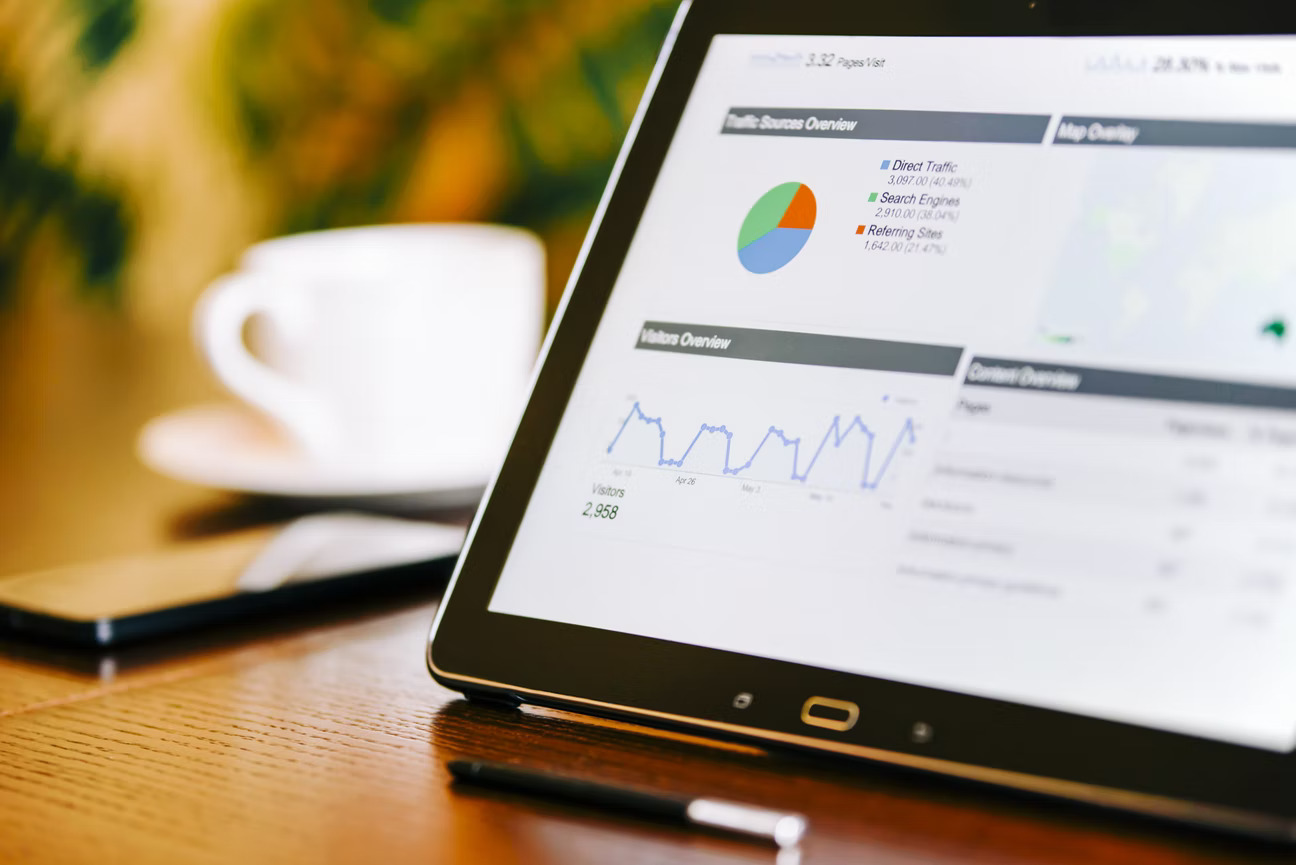What can you learn through your website?
Given enough time, budget, and technology integrations, the answer to this question is basically “everything.” Your website does so many things for your business that it’s a veritable treasure trove of data—if you know where to look. To keep things simple and relevant to your immediate day-to-day, there are four areas you should look at in order to develop key insights from your website.
Customers’ most frequently asked questions
What are your customers looking for? What do they want to learn about from you, and are they finding it? These are critical questions for marketers to be asking, and the answers—or, at least, the start to an answer—can be found within your website. Look at your web traffic and see what pages are being visited the most often, and see what visitors are doing after reading those pages. Are they leaving immediately? A high bounce rate or low time-on-page may mean you need to do more to make sure the page is actually providing what your marketing indicates it will, and lead them to conversion goals more clearly. Are they staying on your site? Awesome—you’re showing them that you have what they need.
You can also use tools like heat-mapping and click-tracking technology to see what parts of a page your visitors are interacting with. If CTAs are getting ignored, you need to do a better job of making them stand out, improve the messaging, or maybe move them higher up the page. If visitors aren’t finishing your content, if they aren’t making it to the bottom of the page, then you’ll need to assess the quality of what you’re providing.
Chatbots are another tool that can help decode what your customers want to know—and they can make it pretty easy, because you can simply take a look at what customers are asking the chat bot. It’s probably the simplest route to an FAQ.
When and how a buyer uses your website along their journey
Knowing where and when your prospects are interacting with your website can also help you determine at what point in their journey from becoming aware of you to buying from you they visit. This, of course, will allow you to create an experience that caters to the appropriate part of that buyer journey—if they’re only coming to your site ready to make that purchase, it needs to be a very different website than it does if they’re coming to you primarily to learn who you are and what you do.
When integrated properly with your website, Google Analytics can give you tons of information about individual users. Among other things, it allows you to see user pathways to see what people are interacting with to get to you, as well as where they’re going next. You can also examine the traffic on specific pages, as well as the search functionality on your site, to see what exactly people are looking for. Again, if you have a ton of awareness-level content on your site and nobody’s touching it, that probably means visitors are deeper in the funnel.
Length of the buying cycle
When someone converts after visiting your site, that can tell you a lot about them if you dig into the data. When was the last time they visited your website? How many times have they visited, and how long did it take them to go from their first visit to purchase? What did they look at? When did they look at it? Did they visit the same pages several times?
All of this information together can tell you how efficiently you’re moving prospects from awareness to conversion. Compare against industry standards, or you can also compare before and after certain specific changes to your website. Adding a content hub that explains why your product is ten times better than Brand X will likely speed things up, but maybe you discover that it’s extra information that prospects don’t need—and reading all of it is delaying purchase.
Complexity of the buying cycle
Buying soap is easy. Buying a million-dollar motor home will likely require more research. Not all buyer journeys are created equal, but you need to know how complicated yours is to be able to provide prospects with what they need to get the deal done. Look at how much information users consume before converting. Are there sticking points where you can provide more guidance? Is there a place where a salesperson reaching out might unstick the process? Or are people flying through straight from awareness to purchase, and maybe your resources would be better spent elsewhere?
How to use your website as a learning tool
While it would be awesome if you could just hop into your CMS and learn everything you could ever need to know about your visitors straight from there, you’re going to need more. There are a few technologies you should integrate within your website in order to gain these valuable insights into user behavior. The list of marketing technology options is about as long as the list of things you can learn from your site. However, if you focus on gaining access to these core pieces of technology and integrate them correctly, you’ll get the most bang for your buck.
CRM & marketing automation
At the core of customer relationship marketing is having a proper tech setup to manage those relationships—that means a CRM and marketing automation platform. These allow you to understand the behavior and psychographic perspective of your audience. It is far more important that you know their interests than it is to know their demographics—those psychographics, or the ways your customers think, will span age, race, gender, and more. Knowing how they think and feel, and the pains they’re coming to you to solve, allows you to then create content that appeals to these interests outside of the website (i.e., email, social media, paid media) and then drive them back to the website for conversion.
The Google ecosystem (Analytics, Tag Manager, Optimize)
These are the three main Google suite pieces that you’ll need to employ. Google Analytics allows you to track user actions across your website, see where your traffic is coming from, find out where your audience is located, and many, many other things (if you spend the time geeking out over it). Google Tag Manager helps you retarget website visitors across multiple channels, and helps you to understand what actions are helping lead to conversions and which are not.
And finally, there’s the all-important A/B testing. Through Google Optimize, you can set up tests to determine what messaging, colors, and calls to action work best to create the desired response among your target market. There are other tools that you can also use to do this—at Element Three, we like Optimizely—but if you’re new to this, Google Optimize is less expensive and less robust, meaning you don’t have to invest tons of money and training time to get started. Additionally, if you don’t get a ton of traffic (E3’s Senior Director of Web and Digital Strategy John Gough recommends at least 1,000 monthly visitors, though you may need as many as 5,000 per week) you aren’t going to have statistically significant findings, which means A/B testing is something you should wait to invest heavily in. Once you get your feet wet, you can decide whether you need a more robust (and expensive) solution.
Chatbot & search function
A few years back, chatbots weren’t as ubiquitous as they are today, but most users are now acclimated to how they work. Pre-load your chatbot with the answers to several of your most frequently asked questions, and capture contact info when a user asks a question that you haven’t already been asked.
Search, too, has improved a ton over the past few years, and is also an expectation on most sites. It has to integrate with your Google Analytics instance in order to fully function on your end, though—otherwise, you won’t be able to capture data on what users are searching for, so you can learn from those questions and from user paths through your site.
Heat Mapping & Click Tracking
Seeing exactly what users do once they’re on your site is invaluable, and heat maps and click trackers give you great info that you can use to see what is and isn’t working in your UX and UI. We use Hotjar for this. One great takeaway can be seeing where people are getting confused—and, therefore, likely not converting.
John Gough offered an example from his career: he was part of a team that built a tool that allowed users to reserve spots on flights on an antique World War II plane that was touring the country as part of an exhibit. Conversion rates were lower than expected, and through heat mapping, they were able to discover that their thoughtfully designed user interface was actually confusing to the user—and since the audience was a slightly older demographic, that was a very real barrier for entry. Rather than having to A/B test different options, they were able to see the problem clearly, and update the UI to make sure it was easily navigable for everyone.
If you ask, they’ll answer
Your website, at its best, is a market research tool. When it’s integrated with the right technology—tech that allows you to capture customer activity on your website and gain insight into the questions they ask, information they consume, and actions they take prior to conversion—you’ve created a powerful tool in your marketing stack. It can be as simple as asking. We’ve created a plugin for a client that populated a pop-up question that just asked for input from visitors, whether they found what they were looking for, and got an incredible amount of information in return. People want to give feedback, if you let them.
There is of course a time and a place for traditional market research and methods such as interviews and focus groups, but when you’re considering how to make real-time adjustments and how to better serve your target audience, gathering key insights from your website through a few pieces of technology is an invaluable tool in your marketing belt. It’s relatively fast, relatively simple, and you’ll learn a lot.





